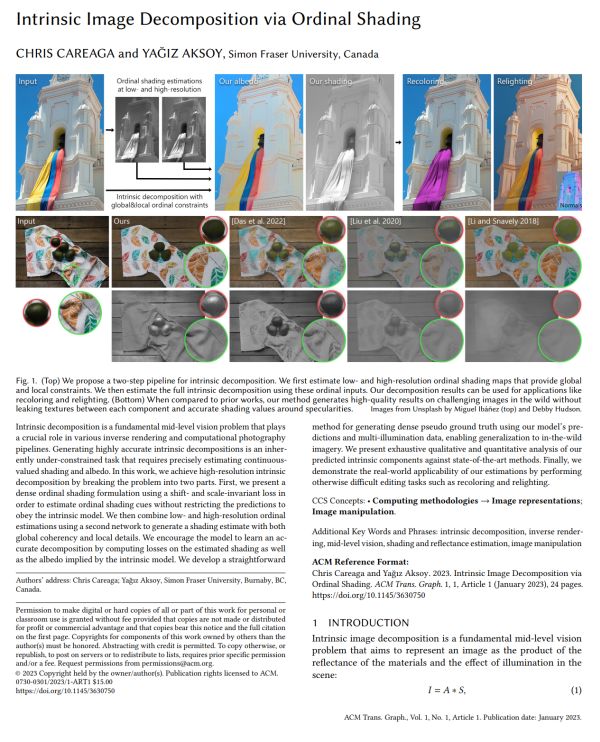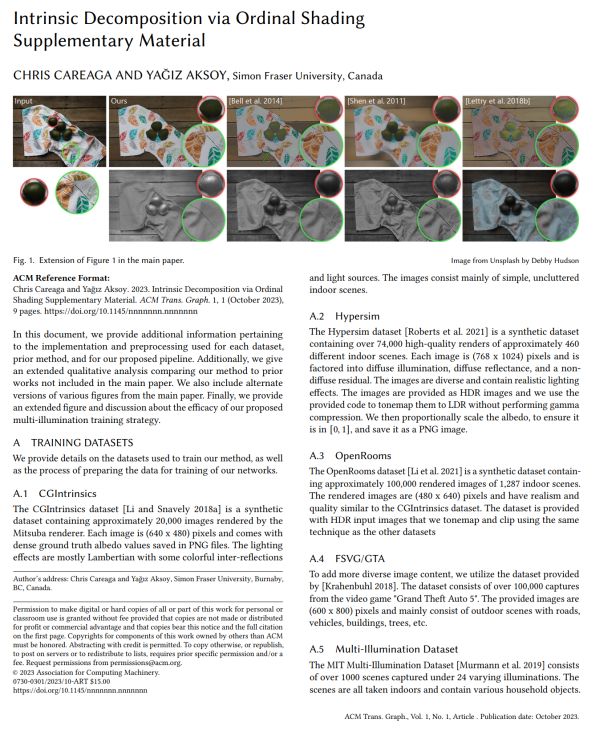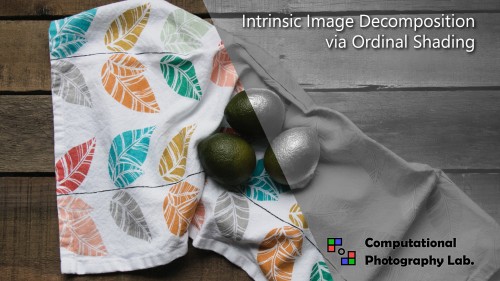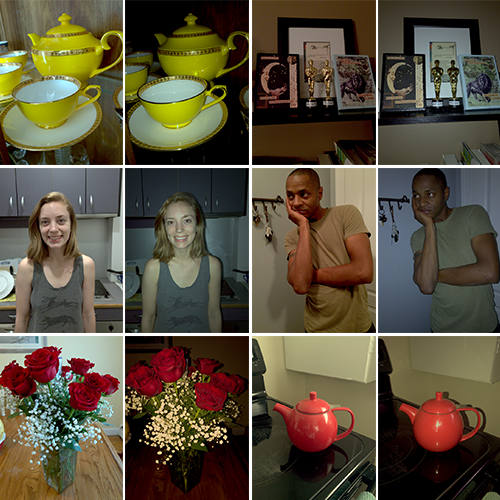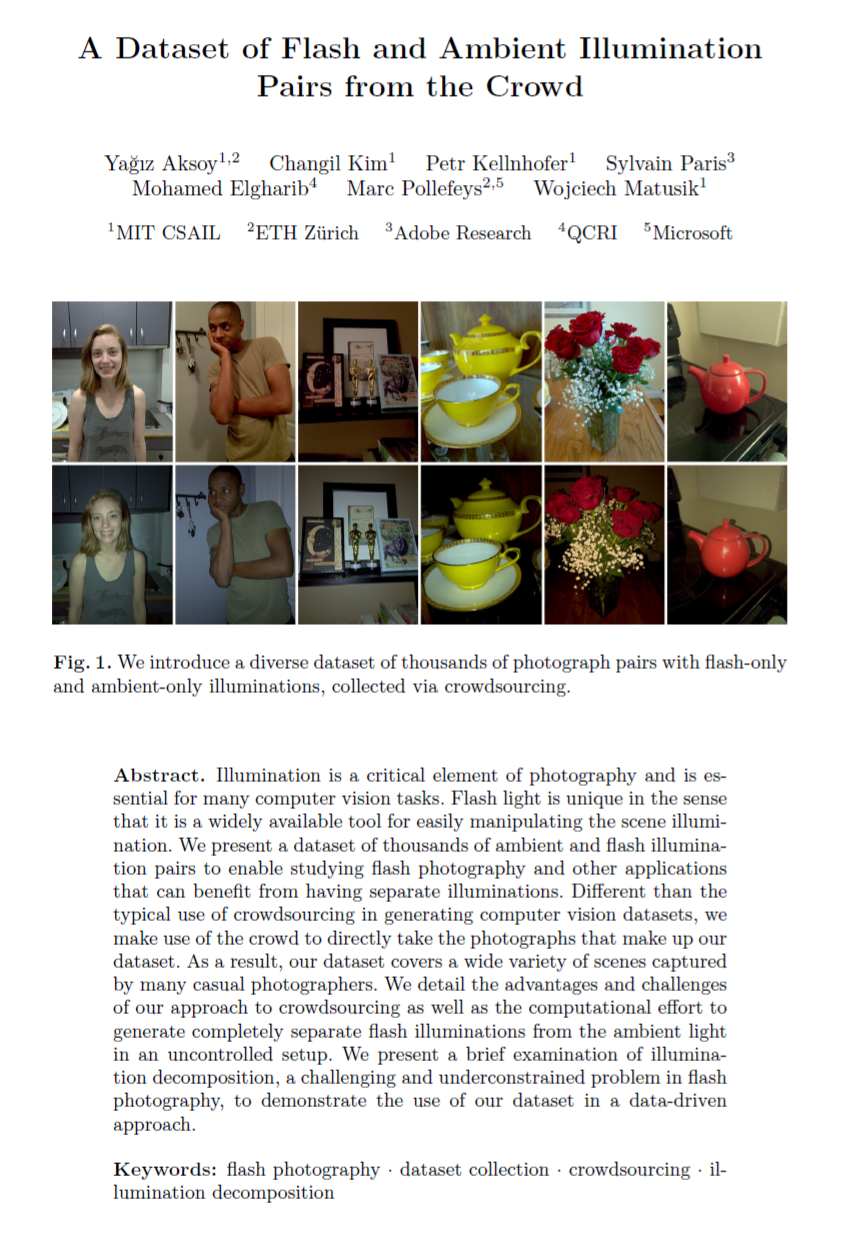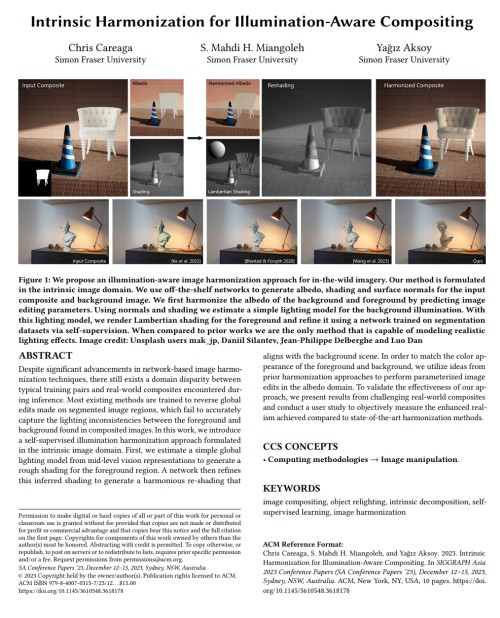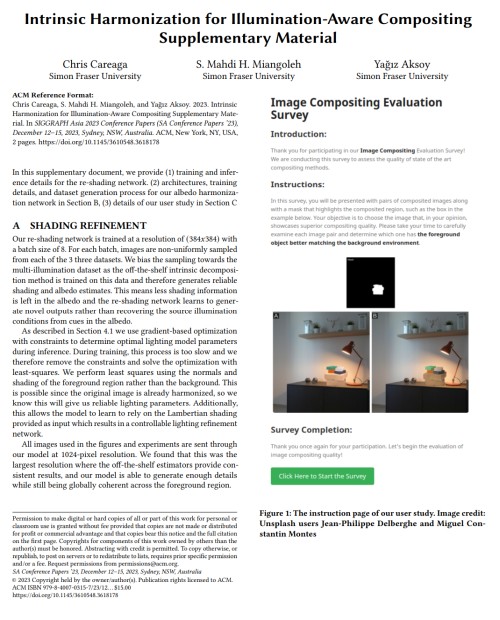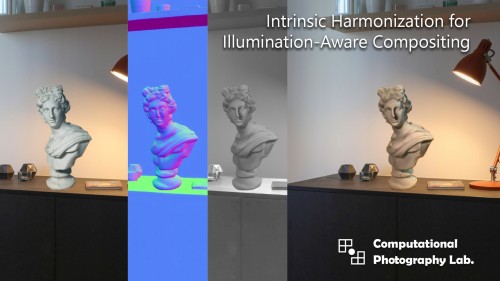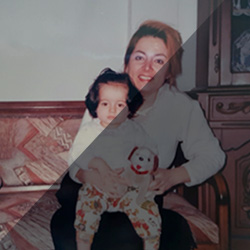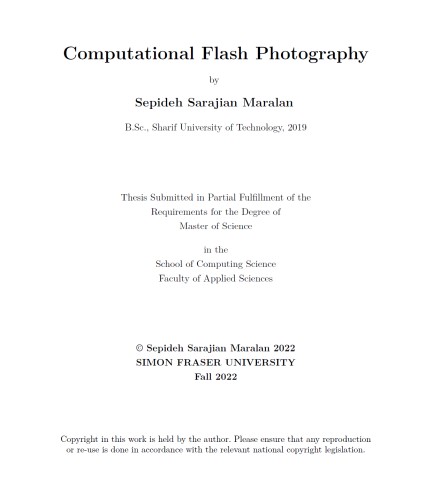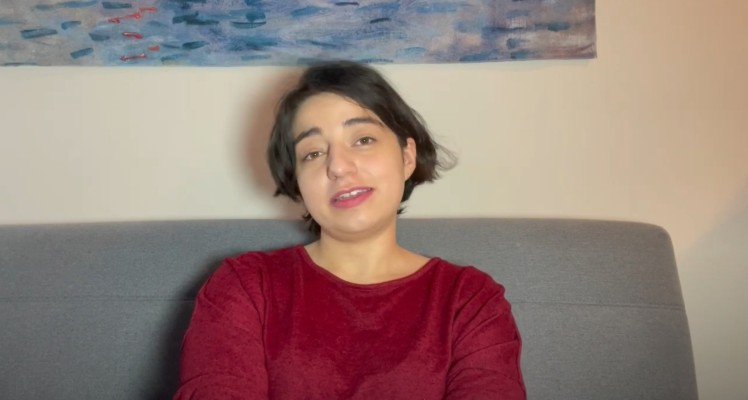Computational Flash Photography through Intrinsics

We develop a system to computationally control the flash light in photographs originally taken with or without flash. We formulate the flash photograph formation through image intrinsics, and estimate the flash shading through generation for no-flash photographs (top) or decomposition where we separate the flash from the ambient illumination for flash photographs (bottom).
Abstract
Flash is an essential tool as it often serves as the sole controllable light source in everyday photography. However, the use of flash is a binary decision at the time a photograph is captured with limited control over its characteristics such as strength or color. In this work, we study the computational control of the flash light in photographs taken with or without flash. We present a physically motivated intrinsic formulation for flash photograph formation and develop flash decomposition and generation methods for flash and no-flash photographs, respectively. We demonstrate that our intrinsic formulation outperforms alternatives in the literature and allows us to computationally control flash in in-the-wild images.
Video
Implementation
Training and Inference GitHub Repository
Dataset
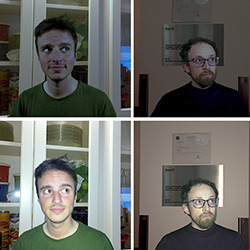
|
We combine and extend existing flash/no-flash datasets to create a diverse set of real-world flash/ambient pairs suitable for training deep networks. Our dataset is constructed from three existing datasets: The Multi-Illumination Dataset (MID), The Flash and Ambient Illuminations Dataset (FAID), and the Deep Flash Portrait Dataset (DPD). We propose a pipeline for compositing portraits from DPD onto backgrounds from FAID, and discuss multiple considerations for normalizing and augmenting flash/no-flash data.
This dataset accompanies our CVPR 2023 paper.
@INPROCEEDINGS{Maralan2023Flash,
author={Sepideh Sarajian Maralan and Chris Careaga and Ya\u{g}{\i}z Aksoy}, title={Computational Flash Photography through Intrinsics}, journal={Proc. CVPR}, year={2023}, } |
Paper
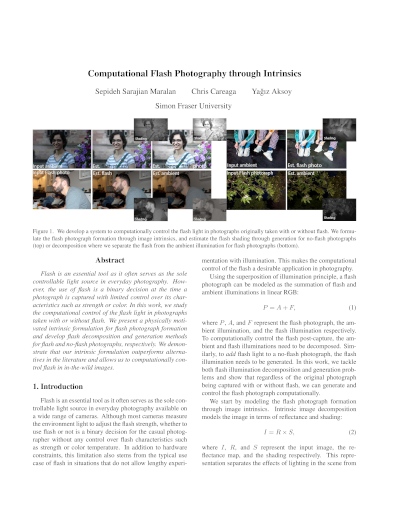 |
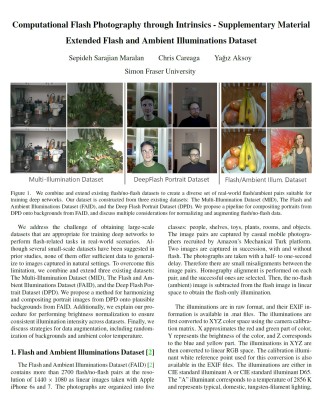 |
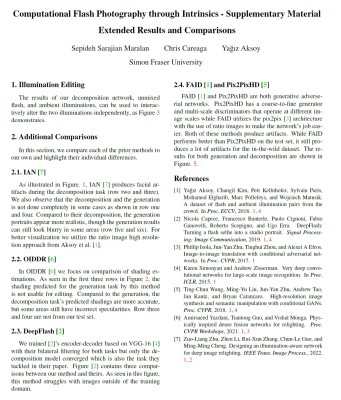 |
Poster
 |
BibTeX
author={Sepideh Sarajian Maralan and Chris Careaga and Ya\u{g}{\i}z Aksoy},
title={Computational Flash Photography through Intrinsics},
journal={Proc. CVPR},
year={2023},
}
Related Publications






